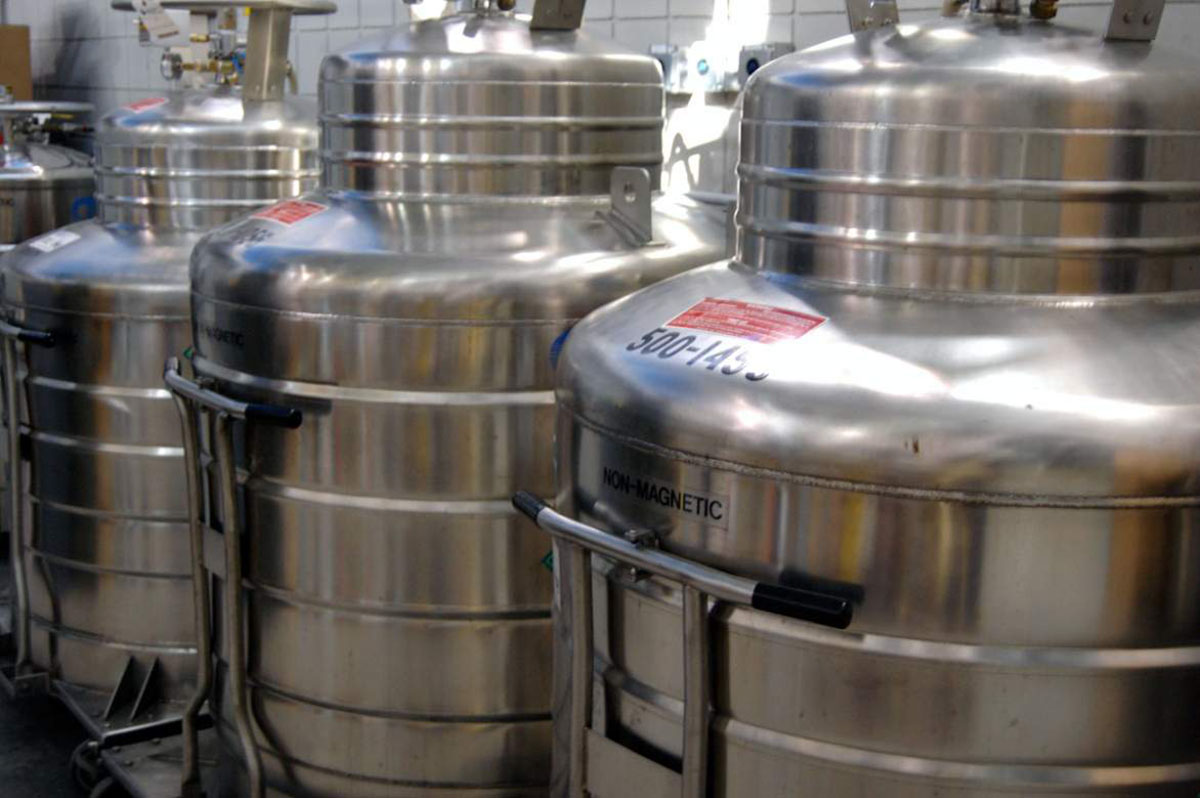If you visit the MagLab, you may see a scientist wheeling a stainless steel cylinder down the hall about as big as the scientist herself.
That's called a dewar, a container used for transporting very cold liquids across our sprawling lab from point A to point B. We use a lot of cold liquids here, specifically liquid nitrogen and liquid helium. Called cryogens, these liquids help us keep superconducting magnets very cold (they don't work unless they're at about -451 degrees Fahrenheit). For certain experiments, cryogens are also used to keep samples and tools cold.
A dewar is basically a super-duper Thermos. Stuff on the inside stays cold thanks to a vacuum jacket and layers of insulation. The MagLab maintains a fleet of 44 100-liter, 250-liter and 500-liter dewars. Scientists collect them from our cryogen stations and wheel them to their experiments. We make our own liquid helium at the lab, transforming it from the gas state in which it is delivered to us by slowly and carefully lowering its temperature. We try to recycle as much of it as we can, because liquid helium costs between $4 and $5 a liter. (Liquid nitrogen, not as rare or hard to make as liquid helium, isn't as costly.) Not including the cryogens consumed by our world-record hybrid magnet (which is hooked up directly to our helium liquefier), we distribute 7,000 to 8,000 liters of liquid helium a week here via dewars.
Scientists and technicians must use this stuff with care. If the temperature inside a dewar gets high enough for the helium or nitrogen to turn back into a gas, there could be trouble. A liter of liquid helium or nitrogen will boil off into 700 liters of gas; the pressure from such a boil-off could cause the container to burst. The gasses themselves are harmless, neither flammable nor explosive. In fact, we use helium to fill party balloons and breathe in more nitrogen than oxygen with every breath. But if a dewar bursts in a closed space, the escaping gas could displace enough oxygen to cause potentially fatal Oxygen Deficiency Syndrome in anyone present. Fortunately, no dewar has ever erupted at the lab — where safety comes first!
By Kristen Coyne



